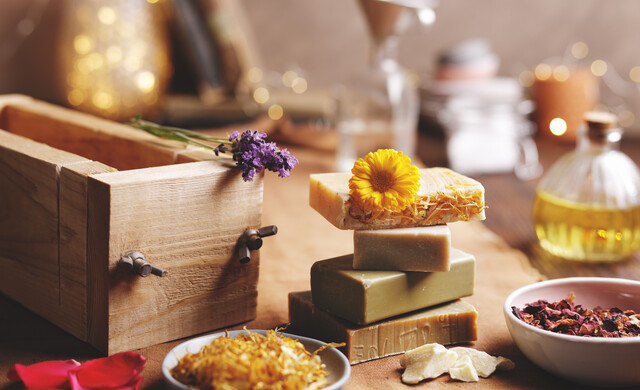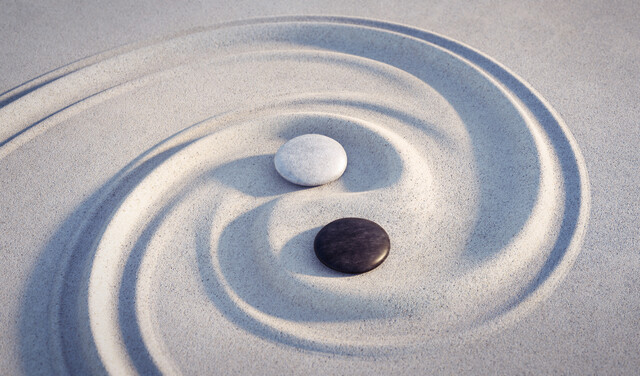Online Class: How to Decorate Your Home

no certificate
with CEU Certificate*
-
15Lessons
-
22Exams &
Assignments -
506Students
have taken this course -
10Hours
average time -
1.0CEUs
Course Description
Embark on a Captivating Journey of Home Aesthetics and Creativity
Welcome to a world where the walls echo stories, where every nook and corner resonates with character, and where spaces aren't just spaces—they are reflections of souls. Our meticulously designed home decoration course is more than just an educational platform; it's a gateway to the vast, vibrant universe of interior aesthetics.
With a 15-lesson voyage, we unravel the magic that breathes life into homes. No longer will interior decorating be a mere hobby or an overwhelming task; by the end of this course, it will be your second nature. You'll move beyond the basics and immerse yourself in the intricate ballet of colors, textures, lights, and patterns.
Dive into the mesmerizing world of design fundamentals:
-
A Palette of Choices: Navigate through the ocean of sofas, delve into the mysteries of lighting, discover the allure of varied hardware finishes, and gaze at the vast horizons of window treatments. We ensure that you don't just know the terms; you live them.
-
Understanding the Symphonies of Design: Using the revered principles of Line, Form, Color, and more, you'll learn to harmonize different elements. Like a maestro conducting an orchestra, you will master the rhythm, balance, contrast, and emphasis to create symphonic living spaces.
-
Everyday Inspiration: Our holistic teaching approach means learning isn't confined to the virtual classroom. We encourage you to wear your decorator's hat always, finding muses in cafes, clinics, hotels, or even a stroll in your neighborhood.
-
Diverse Styles, One Course: From minimalist to baroque, from rustic to modern, journey through various design philosophies. Experience the thrill of exploring aesthetics outside your comfort zone, fueling your creativity.
Every corner of our living space holds the potential to be a canvas, a testament to one's persona and aesthetic sense. This course is not just about decorating; it's about discovering oneself, it's about storytelling, it's about creating a haven you call home. Whether you wish to transform your sanctuary, venture into a career in interior decorating, or just satiate your creative cravings, we promise a journey of discovery, creativity, and endless inspiration.
So, are you ready to paint your story? Join us, and let's create magic, one room at a time!
- Completely Online
- Self-Paced
- 6 Months to Complete
- 24/7 Availability
- Start Anytime
- PC & Mac Compatible
- Android & iOS Friendly
- Accredited CEUs

Course Lessons
Lesson 1. Understanding Interior Decorating: Distinguishing Design from Decoration
Differentiating interior design from decorating, the lesson presents the history and transformative impact of decorating pioneers like Elsie de Wolfe. By embracing elements like color, line, and light, learners are guided towards creating harmonious and balanced spaces that shape daily experiences.Lesson 2. Color-Themed Interior Design
Colors powerfully impact mood and perception, with strategic use transforming room size and ambiance for unique, compelling spaces. Mastery of hues, tints, shades, and tones enables decorators to leverage color's intricate interplay with light, scale, and texture for sophisticated interior designs.Lesson 3. Mastering Textiles and Texture in Interior Design
An insight into textiles reveals the intricate balance between natural and synthetic fibers, showing how each choice contributes uniquely to a room’s functionality and style. Whether opting for durable wool or luxurious silk, understanding fiber properties enhances the versatility and longevity of design choices.Lesson 4. Exploring Diverse Interior Decorating Styles: From Midcentury Modern to Mediterranean
Mediterranean style draws inspiration from the diverse cultural influences of Southern Europe and North Africa, emphasizing the region's distinct climate with bold colors and earthy textures. Stucco walls and intricate ceramic tiles are used to create dignified, dynamic spaces reflecting the Mediterranean's vibrant essence.Lesson 5. Sofa and Seating Selections for the Ideal Living Room Atmosphere
Tables serve as pivotal elements in the living room setup, establishing zones for function and decoration, with diverse options enabling the inclusion of personal collections that spark conversation. When paired with strategic seating arrangements, such elements transform the living room into a dynamic space that reflects the homeowner's style and preferences.Lesson 6. Cabinets and Conversations: The Art of Kitchen and Dining Room Design
Kitchen design that focuses on cabinetry, hardware, and organization can transform functionality and aesthetics without altering the fundamental infrastructure like plumbing. Complementing informal or formal dining spaces with appropriate lighting and furniture defines the character and utility of these rooms.Lesson 7. Beyond the Threshold: Entryways and Corners That Wow
Turning entryways into organized mudrooms addresses practical family needs, offering storage for everything from winter gear to musical instruments, thereby simplifying daily routines. Customizable hooks, shelves, and bins in mudrooms reflect the family's lifestyle while maintaining an organized and tidy home environment.Lesson 8. Transforming Bathrooms: Design Solutions for Powder Rooms and Full Bath Spaces
Vanities in full bathrooms play a crucial role in both practicality and personal reflection, with design elements like cabinetry, mirrors, and sink selection impacting user experience. Thoughtful design can create the perfect balance between ample storage and elegant style, catering to the specific needs and preferences of the user.Lesson 9. Illuminate Your World: Mastering Lighting for Stunning Interior Décor
Different layers of lighting, including ambient, task, focal, and decorative, are strategically used to create welcoming and practical spaces in interior design. With energy-efficient lamps like LEDs, decorators can maintain aesthetic charm while promoting environmental sustainability.Lesson 10. Floors as Natural Connectors
Flooring serves as the foundational element of interior design, influencing both the aesthetic and tactile experience of a space. Choosing appropriate materials and tones can create harmony and meet practical needs, balancing style, functionality, and budget considerations.Lesson 11. Paint and Paper: Elevate Your Walls and Ceilings
Ceiling color plays a crucial role in influencing room perception, with bold choices complementing decor elements or lighter hues creating openness. Techniques like crown molding provide elegant transitions and timeless appeal, dating back to ancient times.Lesson 12. Creating Balance and Harmony with Various Window Configurations
Window frames significantly impact a window's durability, energy efficiency, and insulation, with materials like wood, vinyl, fiberglass, and aluminum offering varied benefits in strength, maintenance, and cost. Decorators should consider climate, frame quality, and desired aesthetics, possibly opting for wood-clad frames to balance beauty and protection.Lesson 13. Design Dynamics: Achieving Balance with Floor Plans
Floor plans serve as a blueprint for decorators, providing a framework to measure, draft, and evaluate every aspect of a room. By understanding how to scale and note crucial elements, decorators can ensure functional and aesthetically pleasing designs according to building codes and accessibility standards.Lesson 14. Modern Color Trends
Emphasizing escapism and serenity in home decor, the lesson highlights color trends that mirror the broader cultural movement towards mindfulness, including palettes like At Ease and Native Instincts. Kitchens and living arrangements are evolving to prioritize function and family interaction, marking a substantial shift away from open-plan, screen-filled spaces.Lesson 15. From Guidelines to Greatness: Mastering Interior Decor
Decorating is an acquired skill that benefits from continuous practice and exploration of textures, patterns, and lighting. Budget constraints can fuel creativity, as unique decor pieces are often found in unexpected places, breaking the myth of needing a large budget for stunning interiors.
Learning Outcomes
- Define the distinctions between interior decorating and interior design, emphasizing their unique roles and educational requirements.
- Recognize and describe the influence of color, pattern, and texture on the mood and functionality of an interior space.
- Demonstrate the ability to create harmonious color schemes using the color wheel to effectively apply complementary and analogous colors in interior spaces.
- Recognize and differentiate between hue, tint, shade, and tone by describing how each aspect affects color perception within interior design.
- Demonstrate the ability to select and apply appropriate textiles in interior decoration, considering factors such as texture, mood, light absorption, and reflection.
- Describe how to identify and differentiate between visual and tactile textures in various surfaces through direct observation and physical interaction.
- Create a design proposal incorporating elements from multiple decorating styles, showcasing creativity and understanding of how different styles can coexist harmoniously in a single space.
- Demonstrate the ability to differentiate between the four decor styles: Midcentury Modern, Country French, Bohemian, and Mediterranean, by identifying key characteristics of each.
- Identify and organize various seating and table arrangements to optimize social interaction and functionality in living rooms.
- Recognize and describe the key features and historical significance of different sofa styles such as Chesterfield and Lawson.
- Describe the unique elements and design considerations for informal and formal dining rooms, including table and chair selection and lighting requirements.
- Recognize different styles of kitchen cabinetry and hardware, and explain how they influence a kitchen's aesthetic and function.
- Demonstrate the ability to create visually appealing and functional entryway designs suitable for various architectural layouts, including hallways and open plans.
- Demonstrate mastery of lesson content at levels of 70% or higher.
Additional Course Information

- Document Your Lifelong Learning Achievements
- Earn an Official Certificate Documenting Course Hours and CEUs
- Verify Your Certificate with a Unique Serial Number Online
- View and Share Your Certificate Online or Download/Print as PDF
- Display Your Certificate on Your Resume and Promote Your Achievements Using Social Media

Choose Your Subscription Plan
No Certificate / No CEUs
This course only
| Includes certificate | X |
| Includes CEUs | X |
| Self-paced |

|
| Instructor support |

|
| Time to complete | 6 months |
| No. of courses | 1 course |
Certificate & CEUs
This course only
| Includes certificate |

|
| Includes CEUs |

|
| Self-paced |

|
| Instructor support |

|
| Time to complete | 6 months |
| No. of courses | 1 course |
Certificates & CEUs
Includes all 600+ courses
| Includes certificate |

|
| Includes CEUs |

|
| Self-paced |

|
| Instructor support |

|
| Time to complete | 12 Months |
| No. of courses | 600+ |
Certificates & CEUs
Includes all 600+ courses
| Includes certificate |

|
| Includes CEUs |

|
| Self-paced |

|
| Instructor support |

|
| Time to complete | 24 Months |
| No. of courses | 600+ |
Related Courses
-
 7 hours
0.7 CEUs
Soap Making Mastery
+ More Info
7 hours
0.7 CEUs
Soap Making Mastery
+ More Info
-
 5 hours
0.5 CEUs
Vocabulary Level 2
+ More Info
5 hours
0.5 CEUs
Vocabulary Level 2
+ More Info
-
 9 hours
0.9 CEUs
Relaxation 101
+ More Info
9 hours
0.9 CEUs
Relaxation 101
+ More Info
-
 11 hours
1.1 CEUs
English Grammar Level 1
+ More Info
11 hours
1.1 CEUs
English Grammar Level 1
+ More Info
-
 5 hours
0.5 CEUs
Microsoft Excel Level 1
+ More Info
5 hours
0.5 CEUs
Microsoft Excel Level 1
+ More Info
-
 5 hours
0.5 CEUs
Business Professionalism
+ More Info
5 hours
0.5 CEUs
Business Professionalism
+ More Info
-
 9 hours
0.9 CEUs
Marketing 101
+ More Info
9 hours
0.9 CEUs
Marketing 101
+ More Info
-
 12 hours
1.2 CEUs
Life Coaching Level 1
+ More Info
12 hours
1.2 CEUs
Life Coaching Level 1
+ More Info
-
 17 hours
1.7 CEUs
Introduction to SQL
+ More Info
17 hours
1.7 CEUs
Introduction to SQL
+ More Info
-
 7 hours
0.7 CEUs
Homeopathy 101
+ More Info
7 hours
0.7 CEUs
Homeopathy 101
+ More Info
-
 5 hours
0.5 CEUs
Constructive Feedback and Criticism
+ More Info
5 hours
0.5 CEUs
Constructive Feedback and Criticism
+ More Info
-
 3 hours
0.3 CEUs
Understanding Learning Styles
+ More Info
3 hours
0.3 CEUs
Understanding Learning Styles
+ More Info
-
 7 hours
0.7 CEUs
Solving Classroom Discipline Problems
+ More Info
7 hours
0.7 CEUs
Solving Classroom Discipline Problems
+ More Info





